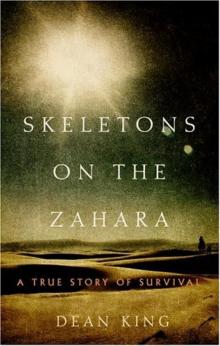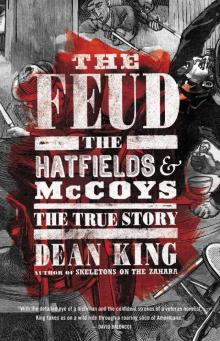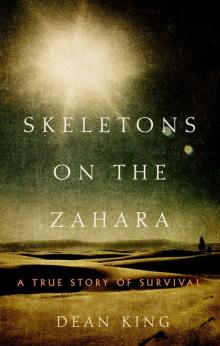The Feud: The Hatfields and McCoys: The True Story Read online
Page 3
This same year, Randall and Sarah McCoy fell in love and married. They were first cousins descended from William McCoy, who in 1804, having been awarded two hundred acres of land in Virginia (now part of Kentucky) for service in the Revolutionary War, had settled in the Tug Valley. Four of his ten sons eventually continued west, but the others and two daughters had planted the McCoy seed on both sides of the river. Like John Knox, the dogmatic founder of Scottish Presbyterianism, the Scots-Irish McCoys had strong traits. They were socially democratic, believing intensely in the equality of all men. They were austere, like their forebears, who had lived in turf huts in the Scottish Lowlands, hardened to discomfort, and adept at survival. While they might accept a friendly hand from a neighbor they could repay, they turned their backs on charity. They would starve before they would beg.
One thing you did not do lightly was cross a McCoy. The family had a fierce streak beyond most. “The McCoys had a reputation for being hospitable to strangers,” Jim McCoy, a nephew of Randall, the family patriarch during the feud, would later say, “but a person better look out if he ever stole anything from them.” As an example, Jim cited his cousin Leland, who had a prized plum tree in his backyard. “Once every day for a week, he found plums missing from that tree,” Jim recounted. “Finally he decided he was gonna fix whoever it was who was taking those plums. So, he put poison on the tree.” The fruit was never stolen again. The thief died.
By 1850, William’s son Sam had become wealthy, owning 1,500 acres of prime land. Living outside Stringtown, Kentucky, he and his wife, Elizabeth, reared eighteen children, including Sarah, better known as Sally. Sam’s younger brother Dan was less fortunate. Unsuccessful in business, he was considered quarrelsome and shiftless by his neighbors. He and his wife, Peggy, moved their children (there would be thirteen in all), including Randall, their fourth child, born in 1825, to Logan County, Virginia, when Randall was a boy. But Dan could not make a go of it there either. To help pay for their farm, Peggy raised and sold hogs; she also sold a snakebitten horse that she had rescued. When Dan lost the farm in a lawsuit after he had been timbering on their neighbor’s property, she decided that she would be better off without him and took the then-unusual step of divorcing him.
Randall McCoy.
Cousins Randall and Sally started out in Logan County but after a while moved across the river to Pike County, where they set out to build a life and a family on property given to them by her father.10
DESPITE THE GENERATIONS OF HARMONY, the warm feelings that united the two sides of the Tug evaporated in the spring of 1861 when Virginia seceded from the Union. The Big Sandy River and the Tug Fork became part of the Confederacy’s western border and a fault line in the division among the states. On one bank was Kentucky, which stayed neutral but would go Union the next year. On the other was a portion of Virginia that would become part of West Virginia and a Union state in 1863, although many of its people would remain fiercely Confederate. Mixed sentiments persisted on both sides of the river, but it was a decisive border, cutting families like a saber. Almost all of the Hatfields and McCoys on the Virginia side of the river stood with the Confederacy, and almost all of the Hatfields and McCoys on the Kentucky side went with the Union. Randall McCoy was an exception. His Virginia ties ran deep. He chose the Confederacy.
By the fall of 1861, when Union colonel and future president James A. Garfield maneuvered his Eighteenth Brigade into the Kentucky side of the Tug Valley to secure strategic troves of salt, iron ore, timber, and coal, the larger conflict had rent the social fabric of this section of the Appalachians. Here, in the nation’s oldest mountains, amid some of its most convoluted and confounding terrain, the war was personal and ignited rampant raiding and feuding. The families on either side knew the enemy, and more than any patriotic feeling, their own honor was at stake, because in these parts a man simply did not allow another man to tell him what to do or take anything from him. Here, where most people lived hand to mouth, his family’s survival was at stake.
The men who lived in these mountains had learned to fight from the Indians and had honed their craft of wilderness warfare—defending, tracking, ambushing, killing—and used it against them, until they had secured the place for themselves. They had a shoot-first, ask-questions-later mentality. They wrestled and fought for fun. Now they turned their sights on each other, and they excelled at the bloodletting.
Shocked by the bitter, remorseless killing, Garfield described his mission as rooting out the “infernal devil that has made this valley a home of fiends and converted this war into a black hole in which to murder any man that any soldier from envy, lust, or revenge hated.” Yet not even the future president, who earned a promotion to brigadier general for briefly securing the region that winter, could gain a real grip on the place.
Serving under Garfield in the Big Sandy Valley was a prophetic man who, seeing longtime neighbors stalking and killing one another “among the interminable hills,” understood the place on a deep level. “Long after the war is closed, men will bear here the old grudge toward each other,” Ohio captain Charles Henry observed; “the bitter gall of hatred will still course their veins, the feudal flames will be yet unquenched.
“A simple declaration of peace,” he declared, “will never do.” 11
As Garfield occupied the rebellious valley, the men along Peter Creek in Pike County, Kentucky, organized a Union home guard. Among its members was Randall McCoy’s strapping six-foot-three brother Asa Harmon McCoy, called Harmon, who was thirty-three years old when he signed up in February 1862. Tight-lipped, with curly dark brown hair and a broad handsome face, Harmon left two slaves behind to take care of his farm and his family: his wife, Martha, better known as Patty, and their four children. Patty was the daughter of a wealthy landowner named Jacob Cline (whose father gave Peter Creek its name), and her brother, also Peter, joined the same company as Harmon. Peter Creek, emboldened by Garfield’s presence, was quickly becoming a Union stronghold.
Just four days after enlisting, Harmon found himself in a skirmish. He took a bullet in the chest. Without much delay, word went out that it was Devil Anse Hatfield, a crack shot, who had wounded him.12
Having married a neighborhood girl, nineteen-year-old raven-haired Vicey Chafin, a couple of days after the battle at Fort Sumter and set up a home on Cline family land by the Tug Fork, Devil Anse, who like the rest of his immediate family sided with his state and the South, found himself just a stone’s throw away from a hornet’s nest of Union sympathizers. Peter Creek, with some twenty homes whose men had chosen or would choose blue over gray, was almost a straight shot—at least for these parts—from Devil Anse’s, just around a bend on the opposite bank of the Tug and up a creek. Groups of partisans on both sides struck each other, at first usually at night, in preemptive attempts to save their own. Like others in the area, when he was not working on his farm or fighting, Devil Anse, now a powerful and wily young man who bore a remarkable resemblance to the Confederate general Stonewall Jackson, hid in the woods near his house to keep from being captured or shot at night. To some extent, life went on: nine months after marrying, he and Vicey had their first child, a boy, Johnse (pronounced “Joncee”). But not long afterward, with Devil Anse absent, Vicey and Johnse were burned out of their cabin in the middle of the night.
Eventually, the region being deemed remote and of marginal significance, Garfield moved on. The fledgling Union home guard’s hundred or so men, led by Captain Uriah Runyon and William “Yankee Bill” Francis, were left to fend for themselves. Devil Anse’s double cousins (cousins on both sides) James, Joseph, and Thompson Hatfield were among the Peter Creek men who rode with Francis and Runyon, as were Peter Cline and his brother Jake, joined by Harmon McCoy—who had survived his chest wound—and his cousin Pleasant McCoy.13
If Devil Anse, a for-profit moonshiner, ever had any doubts about which side of the conflict he was on, the federal government helped clear them up in 1862, when it passed a law making it illega
l to distill whiskey without a federal license, rendering all home craftsmen outlaws. He and his brothers Ellison and Elias and their father, Big Eph, now fifty-one, volunteered for the Virginia State Line cavalry, joining a regiment made up of Logan County men and led by officers of a former company known as the Logan County Wildcats.
Devil Anse Hatfield. (Dr. Coleman C. Hatfield Collection, courtesy of Dr. Arabel E. Hatfield)
Major John B. Floyd, whose home and business were in Warfield, had organized the Virginia State Line to defend this western portion of the state. Floyd was from an old Virginia family and was a former governor of the state; he had also served as U.S. secretary of war under James Buchanan. A tour in the State Line lasted only a year, as opposed to the three-year stint of the regular army. Devil Anse was commissioned a lieutenant, which made sense: known for his physical prowess, the twenty-three-year-old—although also something of a prankster—was a natural leader.14
In February 1862, Floyd had been part of the Confederate debacle at Fort Donelson, on the Cumberland River in Tennessee. Leaving Simon Bolivar Buckner in command, Floyd had slipped out with his men before the infamous surrender to General Ulysses S. Grant that gave the rising Union star his nickname, Unconditional Surrender, and earned him a promotion to major general. Buckner, who would be one of the governors of Kentucky during the feud years, went to a military prison. With this victory, Grant opened up Tennessee to federal troops and guaranteed that Kentucky would remain in the Union. For his part, Floyd now took an aggressive stance along the Tug. He regularly dispatched State Line raiders into Kentucky, where they battled Union home guard forces while seizing horses and other livestock in the name of the cause. Not surprisingly, what was considered confiscation by one side was viewed as theft by the other, and Union forces struck back as opportunity allowed.
In the fall, Yankee Bill and his riders, including his son James, Peter Cline, and, some say, Harmon McCoy, inexplicably struck the Pike County farm of fifty-eight-year-old George Hatfield, whose four sons fought for the Union. Yankee Bill took what he wanted from the house, along with fifteen head of cattle, twenty-five hogs, fifteen sheep, and a yoke of oxen.15
Shortly thereafter, he and his men crossed the Tug and stormed the farm of a man named Moses Cline, a cousin of Peter and of Harmon’s wife, Patty. When the home guard declared that they were requisitioning Cline’s livestock, he resisted. The men shot him in the chest and made off with the animals, leaving him for dead and the farm in shambles. As Cline teetered on the verge of death, his family summoned his good friend Devil Anse Hatfield to say goodbye. Devil Anse swore to his friend that he would hunt down the men who had attacked him and avenge this crime.
In fact, Devil Anse had other scores to settle with Francis and his home guard, whom he blamed for burning his cabin and for putting a bull’s-eye on his back. Though the lines separating vigilante justice, feuding, and warfare were thin and often crossed, Devil Anse went up the chain of command and obtained orders to kill or capture Francis. However, when the State Line routed the Union home guard at Warfield, Virginia, in October, Francis and Runyon vacated the area and attached their battered companies to the Union 167th Militia in Wayne County, Virginia, on the Ohio River, abandoning the Tug and Big Sandy valleys to Floyd’s forces. Yankee Bill had escaped—for now.
In early December 1862, the Virginia State Line cavalry, including Devil Anse, raided Union supply boats in Prestonsburg, Kentucky. As they returned, the riders sacked farms and swept up two dozen of their antagonists. Among them, the ill-fated Harmon McCoy was captured at his home and marched off to a prison in Richmond. Another of the captives warned Devil Anse that a price of twenty-five dollars had been put on his head by Mose Cline, a well-known slave of the Jacob Cline family. On his deathbed, Jacob Cline had charged Mose with taking care of his two younger sons: thirteen-year-old Perry, the youngest, and Jake Jr., sixteen. Mose had patrolled with Peter and in one instance had helped fight off a Rebel raid, clubbing several attackers with his rifle butt.
When Devil Anse reported this threat to his superiors, according to the Hatfield version of the story, one of them instructed him to kill Mose. U.S. deputy marshal Dan Cunningham, who would become a nemesis of Devil Anse, told it differently. According to him, Devil Anse and a comrade “entered Mose’s house without any provocation and shot him dead on the floor.”
In the broader scheme of the war, Mose’s killing was not a particularly notable event. However, in regard to the Hatfield-McCoy feud, it was an aggravating circumstance, a precursor to the animosity that would embroil the families. The Clines and the McCoys had many ties. Mose was a loyal defender of the Cline family, the guardian of two of its sons. He had threatened Devil Anse, and now he was dead. The hostility had been born. These deeds would come to haunt all of them.16
In late December, the State Line cavalry moved to Saltville, Virginia, about forty-five miles southeast of Pikeville, to protect the massive saltworks there. But in early March of 1863, word spread that the State Line was about to be absorbed by the Confederate Army and moved south to the Tennessee line. Floyd’s soldiers asked for little, but they were the last line of defense for their own families and homes and did not want to leave the area. Floyd furloughed his men, and they vanished overnight.17
Not long after, Devil Anse led a group of men across the river into the Peter Creek basin. Several versions of the killing of Yankee Bill Francis have surfaced over time. The most common of these says that Devil Anse and his companion in arms Randall McCoy stalked the Union home guard leader on his farm, watching from the woods and strategizing their attack as he moved in and out of his house doing chores. They decided that Devil Anse would shoot first and Randall would back him up. But while Francis, a shopkeeper in peacetime, was inside, Randall had second thoughts about killing him and told Devil Anse that he did not want to do it.
Before they could discuss it further, the moment arrived. Francis came to the door with his wife. He was preparing to go out, and she was tying his necktie in the waning light of the afternoon. Devil Anse leveled his rifle and squeezed the trigger. Bill Francis’s blood spattered his wife’s face, and he tumbled from her grasp.
The Hatfields tell another, perhaps more plausible version. In their account, Francis (who would have been unlikely to go about his chores so blithely) was hiding out in the woods when Devil Anse and his men arrived. But they knew the area as well as he did, and once they picked up his trail, he could not shake them. Finally, he doubled back to his cabin on the Left Fork to make a last stand. The Rebel contingent followed him there and stormed the cabin. Devil Anse, leading the way, burst through the door. Cornered, Francis blazed away. Devil Anse shot back. Francis was hit and killed.
Years later, those who heard the story of Yankee Bill’s death would reflect less on the differing accounts than on a shared detail that, with the passage of time, seemed almost preposterous: side by side as executioners were Randall McCoy and Devil Anse Hatfield, future patriarchs of the warring families.18
Chapter 2
Un-Civil Warfare
1863–1865
A blood feud, in the vein of the Hatfields versus the McCoys, or the Montagues against the Capulets of Shakespeare fame, is essentially a state of warfare between two families. Feuds do not always have neat beginnings and ends. A feud can be anything from a revenge killing that occurs many years after the original crime to a complex brew of conditions, grievances, and affronts resulting in violence and retribution.
The first mistake people make regarding the Hatfield-McCoy feud is in arguing over when it began, a disagreement that arose even before the feud ended—though exactly when it ended is also a matter of dispute. Was the feud sparked by the senseless murder of Harmon McCoy at the end of the Civil War? Was it ignited fourteen years later, when Harmon’s brother Randall accused Floyd Hatfield of stealing his razorbacks? Or was it Johnse Hatfield’s misbegotten love affair with Roseanna McCoy that caused a fury so fierce that it raged out of control?
The answer to these questions is simply: yes. Like a bonfire lit from three different sides, the conflagration grew out of these events—though they occurred over a span of decades—and gained strength from their accumulation.
AT THE OUTSET OF THE WAR, while Kentucky was still neutral, John Dils, a Pikeville merchant and ardent Unionist, was surprised when a Confederate officer recruiting men in the area accosted him over his anti-Confederate rhetoric. He was even more surprised when the officer arrested him and dispatched him to Libby Prison in Richmond. Soon released from captivity, the indignant Dils traveled to Washington, DC, the following February and offered his services directly to President Lincoln. Commissioned a colonel in the U.S. Volunteers in September 1862, Dils raised the Thirty-Ninth Kentucky Mounted Infantry regiment to defend the eastern part of the state from Confederate attack. More than two hundred men answered his recruiting call on the first day. The Pikeville and Peter Creek men formed Company H. Paroled from a Confederate prison in the spring of 1863 and hoping to return to the fight, Harmon McCoy was examined by a Union surgeon on April 6 at the U.S. General Hospital in Annapolis, Maryland. Though the doctor recommended he be discharged from service, Harmon broke his parole and joined the Thirty-Ninth’s Company H instead.
Over the next year and a half, Dils’s men fought in many battles in Kentucky, Virginia, and Tennessee. They also culled property from the region’s Confederate homes to great effect, sweeping up, among other things, many hundreds of horses. In the summer of 1864, however, a company of black soldiers joined the regiment at its Louisa, Kentucky, headquarters. Despite serving on the side that would end slavery, the men of the Thirty-Ninth proved to be unenlightened. Many packed up their guns and gear and left in a fit of anger; among them were Tug Valleyites Jake Cline and Asbury Hurley. It was a bad decision on more than one count. Leaving aside their prejudice, they were now fugitives of the regular army as well as vulnerable to the home guard on both sides.1

 A Sea of Words
A Sea of Words Skeletons on the Zahara
Skeletons on the Zahara The Feud: The Hatfields and McCoys: The True Story
The Feud: The Hatfields and McCoys: The True Story Every Man Will Do His Duty
Every Man Will Do His Duty 9/11...The Tragic Story of the Day that Changed America: The Terror, The Horror and The Heroes
9/11...The Tragic Story of the Day that Changed America: The Terror, The Horror and The Heroes White Slave Cop
White Slave Cop Skeletons on the Zahara: A True Story of Survival
Skeletons on the Zahara: A True Story of Survival